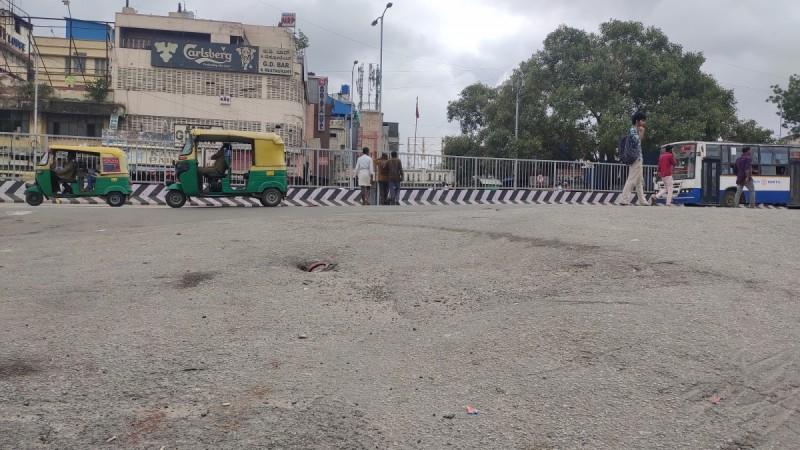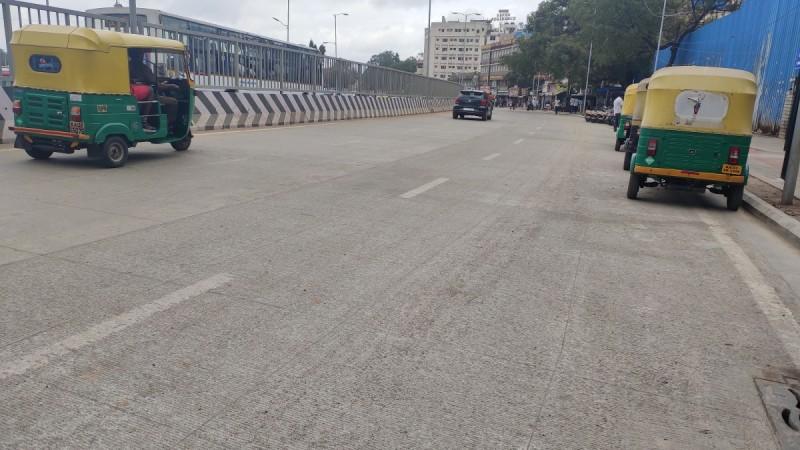
The already bustling and overcrowded roads in Bengaluru have left the commuters hanging by a thread for several hours in the busy traffic. Adding to the misery, we now have the white topping which has burdened people with a great deal of pollution and traffic congestion.
The replacement of bitumen concrete with cement concrete has not paved the way for any strong structure as most of the newly constructed white-topped roads in the city have an uneven surface. The task of constructing the cement-filled roads was undertaken by the civic body Bruhat Bengaluru Mahanagara Palike (BBMP) using state funds of a whopping Rs 2,000 crores.
The idea of white topping the roads was to create a stable and long-lasting surface, which could last up to 30 years without potholes. But people are taken for a bad ride if you go above 40 kmph on the roads, as a car lurches because of the uneven surface.

In the Yeshwantpura - Mekhri circle stretch, people are suffocating from the poorly constructed cement block due to the traffic congestion. The white topping of roads looks flawed in Bengaluru as it is not built according to the height measurements.
The uneven height is a major problem as it affects the drain pipes as well as the footpath. Compared to the tarred asphalt, it is a boon that a white-topped road will not be destroyed during the monsoon due to its hard structure but can cause a flood-like situation as concrete does not absorb water.

Due to the heavy traffic problems in the city, the government is constructing the concrete-filled roads side by side to keep the traffic balanced. However, this has created a dangerous situation as the iron rods from the concrete blocks, which are protruding towards the tarred asphalt, pose threat to the people.
The quality of the construction differs from place to place. The Nrupathunga Road towards Hudson Circle is in contrast with CV Raman Road at Sadashivnagar. The NTR road has a levelled surface that offers a comfortable ride compared to other roads.
When the government is paying such hefty sums for developmental projects, the lawmakers should be responsible for delivering quality works rather than chugging taxpayers money.

















